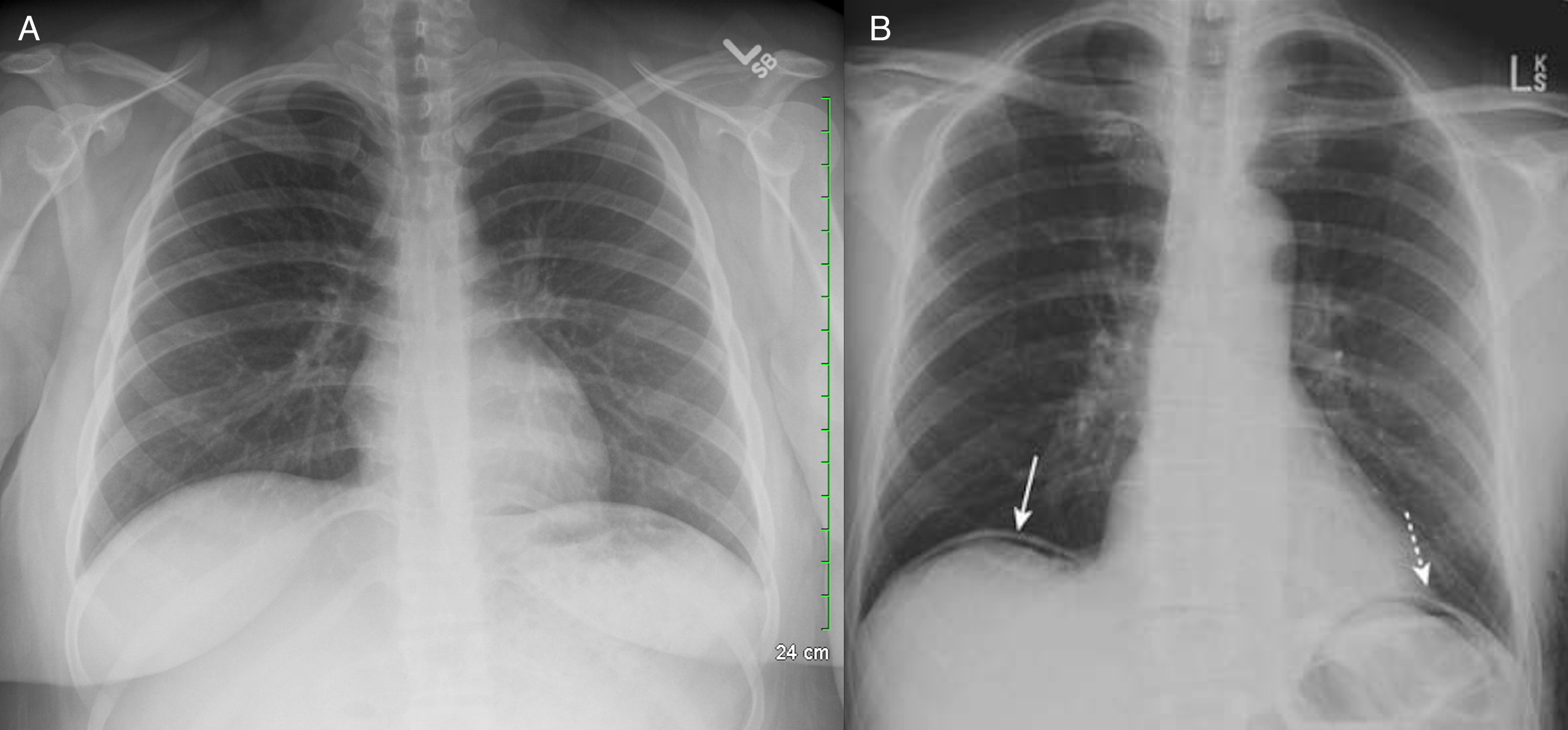Page Contents
OVERVIEW
This page is dedicated to covering the important radiological finding of air beneath the diaphragm. Look here for more radiological findings.
WHAT IS IT?
Air beneath the diaphragm refers to a finding that points to the presence of free intraperitoneal air. It can be appreciated on various radiological studies including a chest X-ray and an abdominal X-ray. In the setting of an upright patient, free air in the peritoneum will reveal itself as crescentic lucency below the diaphragm often because air will travel to the highest part of the abdomen.

DIFFERENTIAL DIAGNOSIS FOR THIS FINDING
When seeing a air beneath the diaphragm, it is important to keep in mind the following possible causes of this finding:
- Recent abdominal surgery:
- Bowel perforation: perforated peptic ulcer, diverticulitis, appendicitis, carcinoma, trauma
- Perforated stomach: perforated peptic ulcer
KEY FEATURES TO LOOK FOR WHEN CHARACTERIZING THE FINDING
When seeing a air beneath the diaphragm, there are a few important features one should keep in mind to try and characterize the finding. These features can help navigate the differential diagnosis above.
- Recent abdominal surgery/procedure history in patient: if the patient has recently had a surgical operation/procedure that could introduce air int he peritoneal space, this radiological exam finding may very well be expected. The free air should subside ~ 1 week after a procedure.
Page Updated: 01.09.2017